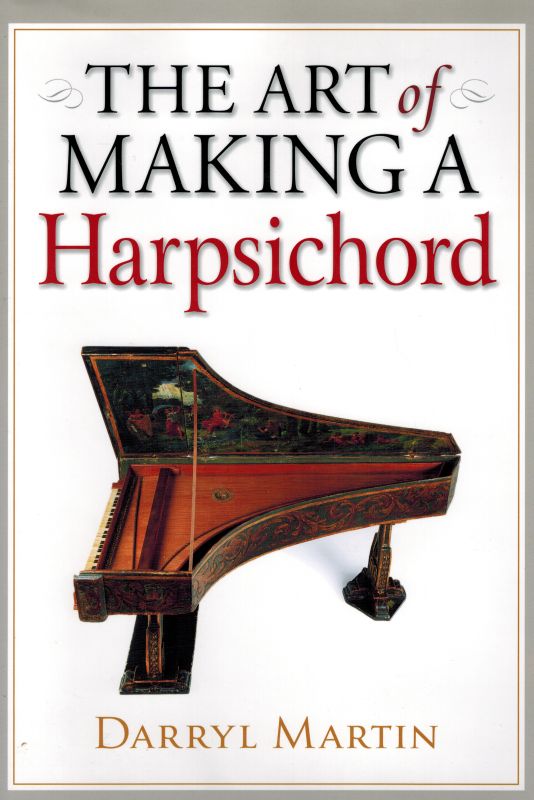Martin, The Art of Making a Harpsichord.
The Art of Making a Harpsichord.
London, Robert Hale, 2012. 21.5 cm x 29.5 cm. 256 pages. Original Hardcover with original dustjacket in protective collector’s mylar. Our book has the advantage to be placed in protective collector’s mylar, which will keep it valuable and preserved for a long time to come. Near Fine, close to new condition.
Includes for example the following essays: Compass / Disposition / Italy / Iberia / The Low Countries / Virginals and spinets / A “copy” or not? / Pitch, disposition and compass / Purchasing drawings / Adding a transposition facility / Historical Italian alterations / Petit Ravalement / Lighting / Workshop and Tools: Lighting, Humidity… / Italian-style construction: Inner-outer or integral case? / Making the jacks: Planing the blocks to width; Slicing the blocks; The tongue and damper slots; The brass spring… / Making upper and lower registers / The soundbars / Action alignment / Mouldings / The keyboard: making the arcades; The accidental touchplates; Action cloths…/ Jackrail and jackrail blocks / Metalwork / Decoration: Gesso; Varnishing; Gilding…etc.
″For around three hundred years, the harpsichord was the leading domestic musical instrument and often a highly fashionable piece of furniture as well. Usurped by the piano at the beginning of the nineteenth century, it was taken up again with the first revival of early music at the beginning of the twentieth century. Over the past forty years, makers have been getting closer to reproducing examples from the historical past. Now, The Art of Making a Harpsichord gives its readers the chance to discover this challenging and rewarding pursuit in a way that is rarely possible without working with an established builder. Beginning with an overview of the instrument, its schools and workshop traditions, the author – himself an experienced maker and researcher – explores the various models and types before leading the reader through the manufacture of an Italian-style instrument, while describing historically-based working methods which are applicable to all traditions. Just as in the seventeenth or eighteenth century, there is no need to rely on large power-tools. This book has been designed to provide assistance to all harpsichord makers, whatever model they choose to make. It is lavishly illustrated with line drawings and photographs, the latter taken – wherever possible – from antique examples that give the reader as full an understanding as possible of the quality of these beautiful instruments.” (Publisher)
- Keywords: Arts & Crafts · Arts & Crafts Movement – Rare · Classical Music · harpsichord · Music – Rare · Music History
- Language: English
- ISBN: 9780709085706
- Inventory Number: 72232AB
EUR 68,--
© 2025 Inanna Rare Books Ltd. | Powered by HESCOM-Software










